Key Stage 2 teaching resource: Jurassic forest
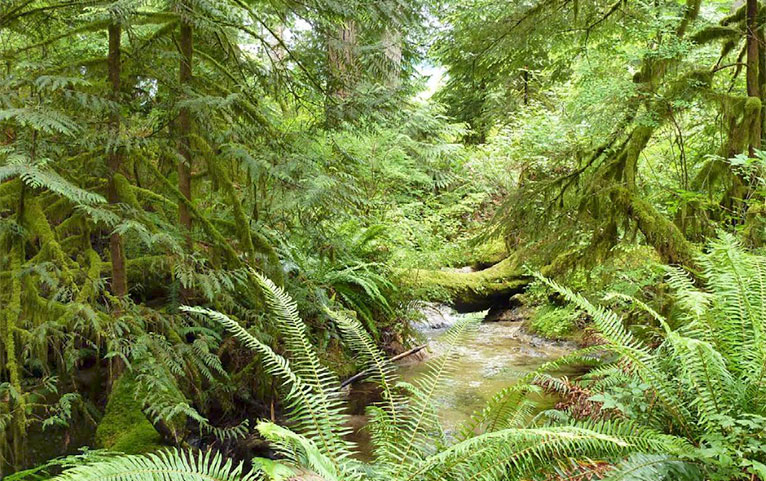
In this set of linked activities for teachers of Key Stage 2, children aged 7-11 discover the living things that existed in a Jurassic forest and create a Jurassic forest in their classroom.
They film a first-person perspective journey through their forest using a tablet or camera, and make and record Jurassic forest sounds to accompany it.
Not all activities will be relevant for all classes. The activities were developed to be broken up and used over a period of time and as suitable for your particular class.
Seven activities are listed below on this page, with scripts and supporting images. The whole list of activities can also be downloaded as a single PDF (4.6MB).
Curriculum learning outcomes
- children will learn the names of more than two living things in their local and wider environment (Science / The world around us)
- children will be able to identify and describe the functions of different parts of flowering plants (Science)
- children will understand the life cycle of flowering plants (Science)
- children will be able to describe the life processes of reproduction in some plants (Science)
- children will apply multiplication (Mathematics)
More information on the curriculum links for England, Wales, Scotland and Northern Ireland is available in the curriculum detail PDF (3.1MB)
Activity summary for teaching activities
An introductory postcard introduces the children to the Jurassic Coast and the fossils found along it, including the dinosaur footprints on the front of the card. It introduces the fossil Jurassic forest discovered in the cliffs of Dorset - a snapshot in stone of the sort of world where the Diplodocus Dippy was cast from would have lived.
The children’s challenge is to create a Jurassic forest in their classroom. They will explore the animals and, in particular, the plants that lived there. If feasible they will find ferns, conifer twigs and pine cones from a nearby woodland or parkland, to make their own Jurassic forest.
The resources and lesson ideas on this page give further tips on how to transform the classroom, and challenge the children to explore the similarities and differences between ferns and the flowering plants of today.
You can download an overview of the activities as a two-page PDF (2.7MB).
Resources required
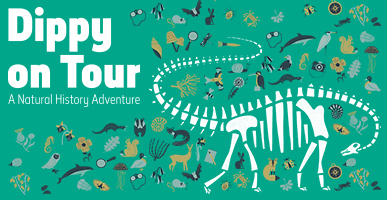
Adventures with Dippy
Browse the whole range of Key Stage 2 Dippy on Tour learning resources
Provided on this webpage
- Introductory postcard
- Scripts for activities
- Images to support teaching
- Sound effects of the Jurassic
- Glossary
Provided by the school
- Photocopying for pupil resources (they do not need one each)
- Materials for creating a Jurassic forest (card, paper, shoebox etc)
- Filming device (tablet, phone, camera etc)
- Percussion instruments
Introductory images
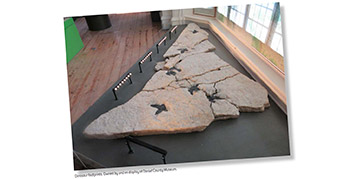
Dinosaur footprints image
You can use this image to demonstrate to your class how dinosaur footprints can be found in the UK.
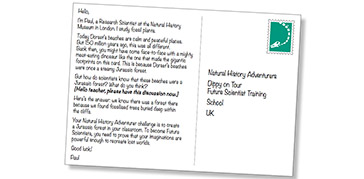
Postcard image
This postcard can introduce your class to the activities they’re about to complete.

Blank postcard image
This postcard can introduce your class to the activities they’re about to complete.
- Download the postcard template as a Word file (80KB)
Analysis activity - Earth’s changes and the Jurassic forest
Script
Before you create your own Jurassic forest, you’ll need to know a little more about what the Jurassic world was like. Here’s an image of how the world looked when Dippy was alive, around 150 million years ago. As you can see, it was very different. Can you see how South America, Africa, Antarctica and Australia were all joined together?
If you look carefully, you can see the UK, much further south and closer to America than it is today. The fact that the UK is closer to the equator means that the Jurassic forest was much warmer than our forests today.
Compare the image of Earth during the Jurassic Period with this image of how the world looks today.
The continents have moved apart and the UK has moved further north. If you look carefully, you can see how the east coast of South America (the right-hand side of South America on the map) still looks as if it would fit into the west coast of Africa (the left-hand side of Africa on the map), like a gigantic jigsaw puzzle. Evidence like this helped scientists understand that the continents were moving.
Now that you know how the world has changed, you can move on to what a Jurassic forest looked like. Take a look at this drawing of a Jurassic forest in Yorkshire. As you can see, there are some things that are similar to a forest today, but other things are very different.
One thing a Jurassic forest had that today’s forests don’t was dinosaurs and pterosaurs. But there’s one important form of life that grows in modern forests that didn’t grow in the Jurassic forest. Have a look at this picture and see if you can spot what’s missing.
Images to download
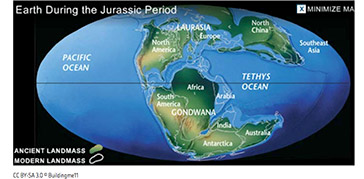
Earth in the Jurassic Period
Download the Jurassic Earth image
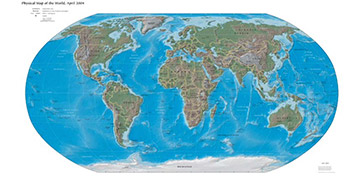
Modern Earth map
Download the modern Earth map
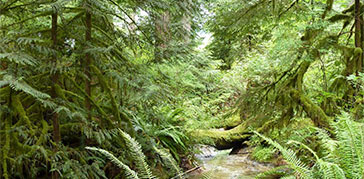
Jurassic Forest
Download the Jurassic Forest image
Observation activity - Comparing flowering plants and ferns
Script
Did you guess correctly? The things that grow in our forests today but were missing from a Jurassic forest are flowering plants. Instead of plants with flowers, Jurassic forests were filled with ferns and conifer trees.
This meant that life cycles in a Jurassic forest were very different from today.
Observe this diagram of a flowering plant and a fern and make a list of all the things that are the same and all the things that are different from each other. With your teacher, can you uncover the role that flowers play in the life cycle of flowering plants?
Images to download
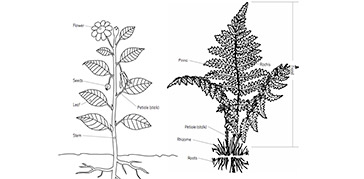
Labelled diagram
Download the labelled diagram image
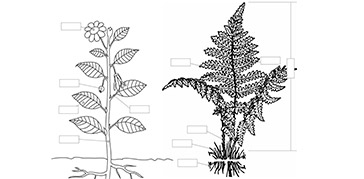
Diagram with empty labels
Download the diagram image with empty labels for the children to fill out
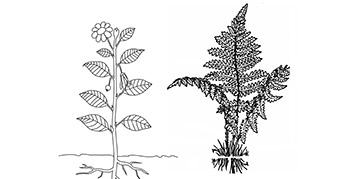
Unlabelled diagram
Download an unlabelled version of the diagram image
Numeracy activity - How much did Dippy eat?
Script
As Dippy was 26 metres long, you can imagine that he had to eat quite a lot of food. But how much? Future Scientists need to prove that they are good with numbers too.
We estimate that Dippy was so huge he needed to eat 20 kilogrammes of vegetation every hour. That’s the same weight as a two-year-old human child!
So if we know that Dippy ate 20 kilogrammes of food per hour:
- How many kilogrammes did Dippy eat in one day?
- How many kilogrammes did Dippy eat in one week?
- How many kilogrammes did Dippy eat in one year?
Field trip activity - Go on a woodland expedition
Script
It looks like you’re going on an expedition to discover ferns and conifers in your woods – your own forest adventure!
Here are pictures of common ferns and conifers to help you find modern plants that look like those in a Jurassic forest. Before you set off, take a moment to look at these pictures so you know exactly what you’re looking for.
Good luck on your woodland expedition. Dippy’s team can’t wait to see how your Jurassic forests turn out.
The Country Code
Important: Woodland adventuring is really fun, but when you go collecting it’s important that you always keep to the Country Code. The Country Code is a set of rules to protect the countryside so that everyone can keep enjoying it. There are some things you can collect from woodlands, and some things you cannot.
Here is what you can collect:
- leaves, sticks and pine cones that have already fallen off of a plant or a tree
- pick only one leaf from each plant, supplement this with photographs and drawings
- if you are out in a group take one example from each type back to the classroom as a collective, not one each
As for what you cannot collect, remember:
- in some protected areas (eg Sites of Special Scientific Iinterest) you cannot pick anything
- some species are protected by law and cannot be picked – as a general rule if something looks unusual or there isn’t very much of it, don’t pick it
- you must never pull the whole plant out of the ground because it will die
- you must not pick wild flowers
- some mushrooms and other fungi are poisonous so it’s safest not to touch any of them and take photographs instead
Other things to remember in the woods:
- the woods are the home of the plants and animals and you are visitors, so if you meet any animals, do not disturb or frighten them
- don’t trample on any plants
- when on expeditions, Natural History Adventurers should always work in pairs to make sure they stay safe
For further guidelines please download the Botanical Society of Britain & Ireland’s Code of Conduct 2017.
Images to download
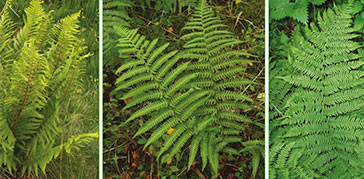
All ferns
Download the image of all the ferns
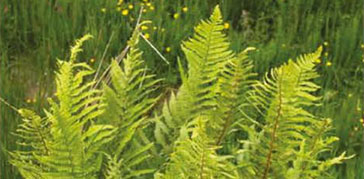
Golden-scaled male fern
Download the golden-scaled male fern image
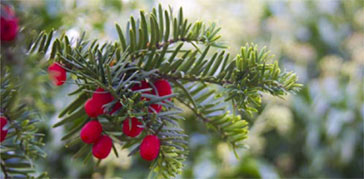
Yew
Download the yew image
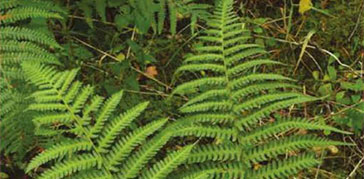
Male fern
Download the male fern image
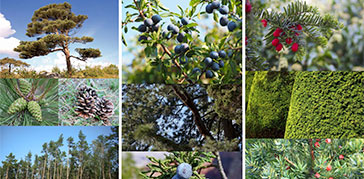
All the conifers
Download the image of all the conifers
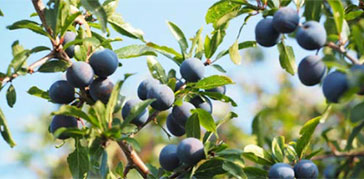
Juniper
Download the juniper image
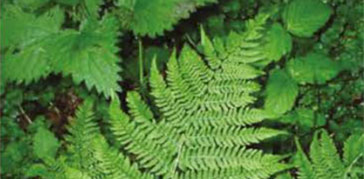
Lady fern
Download the lady fern image
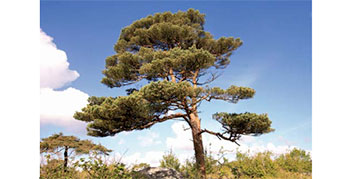
Scots pine
Download the Scots pine image
Art activity - Create your own Jurassic forest
Script
Now that you understand a little about the Jurassic world, you’re ready to create your own Jurassic forest.
Here are some pictures of ferns and conifers similar to those in a Jurassic forest. Your job is to create your own ferns and conifers from paper, card and other things that you and your teacher can find. Take a look at the images and use them as inspiration for making your forest.
This is a ginkgo. It is a relative of the conifer trees that were common in Jurassic forests. Its leaves were shaped like fans. Can you make your own gingko leaves for your classroom forest?
Images to download
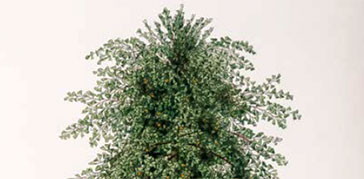
Ginkgo tree
Download the ginkgo tree image
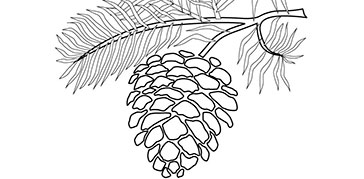
Conifer branch and cone outline
Download the conifer branch and cone outline image
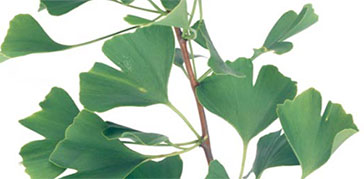
Ginkgo leaves
Download the ginkgo leaves image
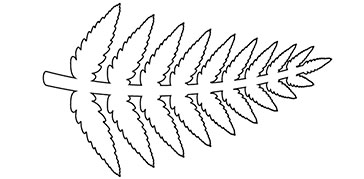
Fern outline
Download the fern outline image
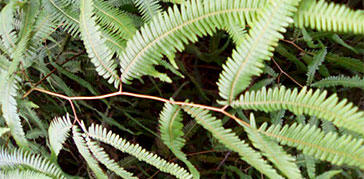
Dicranopteris
Download the Dicranopteris image
Music activity - Bring Jurassic sounds to life
Script
If you’re reading this, it must mean that you have created your amazing Jurassic forest. Dippy’s team can’t wait to see how it looks - and sounds. All forests today are pretty noisy places, as were Jurassic forests.
Of course, we don’t know exactly what noises dinosaurs made, but we have some theories. Some noises we know a Diplodocus would have made are the thunderous, crashing sounds as it walked through the forest.
Your next challenge is to bring your forest to life by recreating the sounds in it. Your teacher has links to sounds that scientists think would have filled a Jurassic forest. You could listen to some of these now.
We’ve started a list of creatures who lived in the Jurassic forest and the sounds we think they might have made.
Creature |
Sound |
Diplodocus |
Crashing footsteps |
|
|
|
|
Your next challenge is to work out how to bring these sounds to life.
One musical instrument that humans have is their voice. Your teacher may be able to find other things to help you make your sounds. Once you have experimented with your soundscape, your teacher can record it.
Once you’ve done this, you’re ready to put together your own Jurassic forest movie.
Filmmaking activity - Film your Jurassic journey
Script
The final step is to film a journey through the Jurassic forest you’ve made.
Your movie should take us back in time to a Jurassic forest, complete with trees, plants and the sounds of distant dinosaurs.
Using a tablet or video camera, please film a first-person journey through the world. A first-person perspective is when we see the world from the point of view of one character. We see what the character in the film is seeing. Computer games like Minecraft use a first-person point of view – we play a character and see what they see.
Some of you can be the narrators for the journey, telling the story of what happens. Here’s a film of Sir David Attenborough, one of the greatest Natural History Adventurers of them all, talking about life in the rainforest. He’s the master of narration, so use him for inspiration!
We also need at least one of you to be the camera operator. Who has the steadiest hands?
Finally, some of you can take turns to be directors. A director makes sure that everyone knows what they are doing and when they should do it. The director also says ‘action’ to tell the camera operator to start filming.
Here are some tips for creating the best films:
- once the director has said ‘action’ make sure that the only noises made are by the person narrating and the people making the sounds of the forest
- try and keep the camera or tablet as steady as possible
- write a short script to practice your narration
- remember to have some rehearsals before filming the final version
When you have finished, your teacher can email images and films to DippyOnTour@nhm.ac.uk with the subject line Forests so Dippy’s team can see what you have made.
Glossary
Conifer
A tree (or sometimes a bush) that has cones and needle-like or scale-like leaves. It is generally evergreen, meaning it keeps its leaves in winter.
Continent
One of Earth’s seven major areas of land. The continents are Africa, Antarctica, Asia, Australia, Europe, North America and South America.
Dinosaurs
A group of reptiles that lived on land. Dinosaurs lived on Earth from around 231 million years ago to 66 million years ago. Most dinosaur groups are now extinct.
Diplodocus
Diplodocus was a dinosaur that lived about 150 million years ago during the Late Jurassic Period. It grew up to 30 metres long and weighed up to 20 tonnes. It ate plants and had four legs, a long neck and a long tail.
Dippy
Dippy is the name given to the Natural History Museum’s cast of a Diplodocus skeleton. He was cast from original fossil bones discovered in the USA in 1898. He came to the Natural History Museum in 1905.
Expedition
A journey or trip that people go on for a particular reason. For example, some scientists go on an expedition to find rare fish.
Fern
A common plant that has feathery leaves called fronds and does not produce flowers.
Flowering plant
A plant that produces flowers that are used for reproduction.
Fossil
The remains or impression of a prehistoric plant or animal embedded and preserved in rock. Fossils can be the actual remains of a once living thing, such as bones or seeds, or traces of past events, such as dinosaur footprints.
Herbivore
An animal that feeds on plants.
Jurassic
The Jurassic Period was a geologic period that lasted 56 million years from the end of the Triassic Period (201.3 million years ago) to the beginning of the Cretaceous Period (145 million years ago). It is sometimes known as the Age of Reptiles.
Life cycle
The stages a living thing goes through during its life.
Pterosaurs
A group of large, flying reptiles that lived from around 228 million years ago to 66 million years ago.